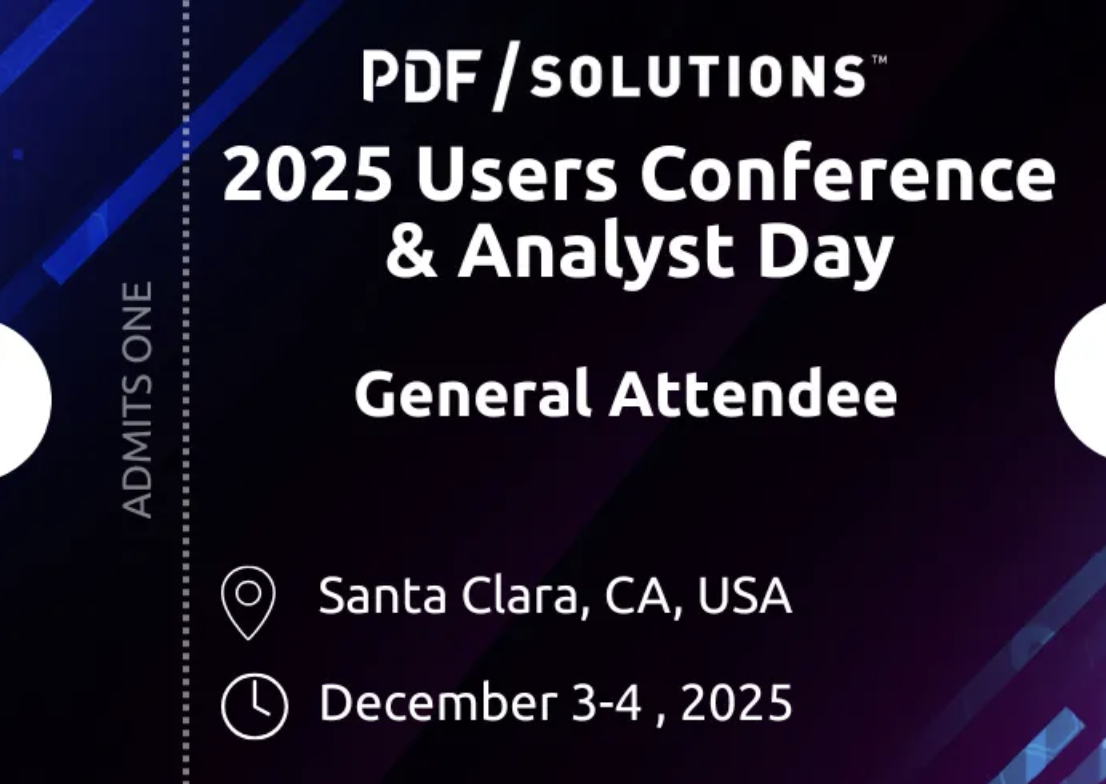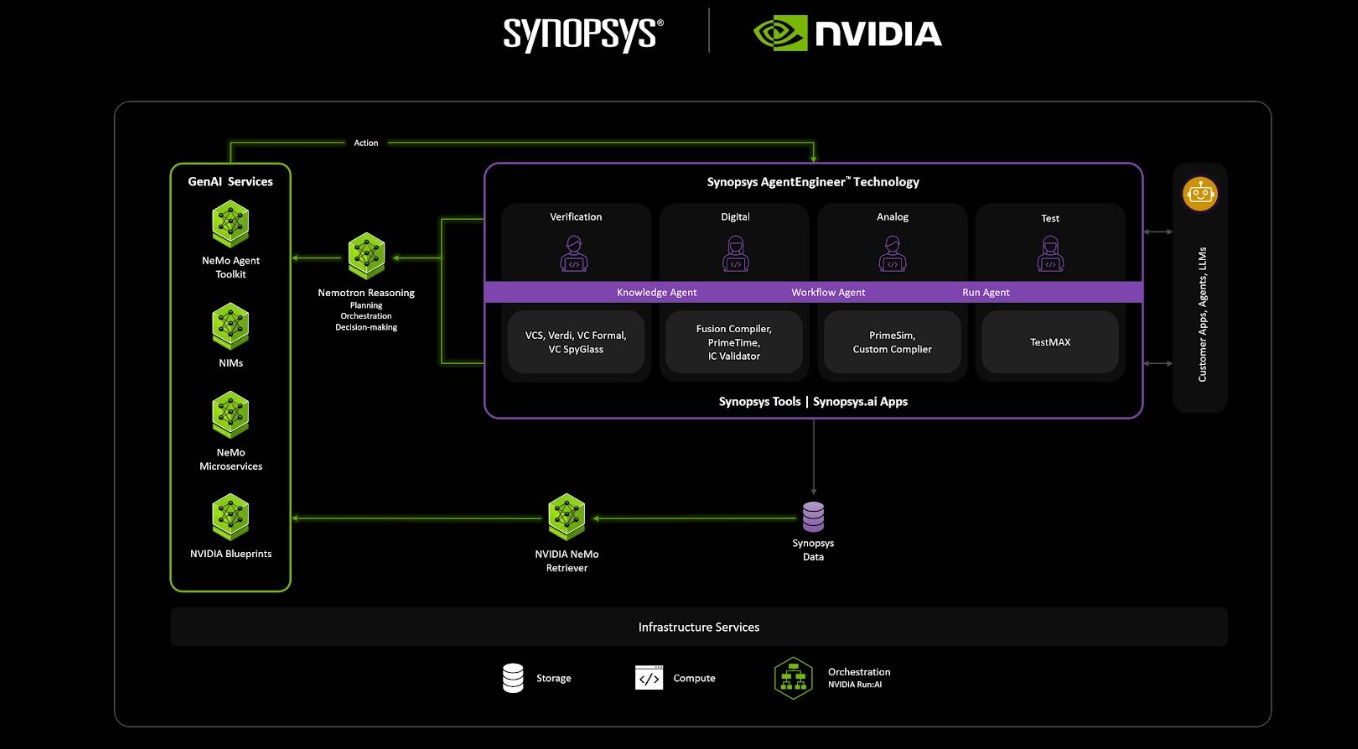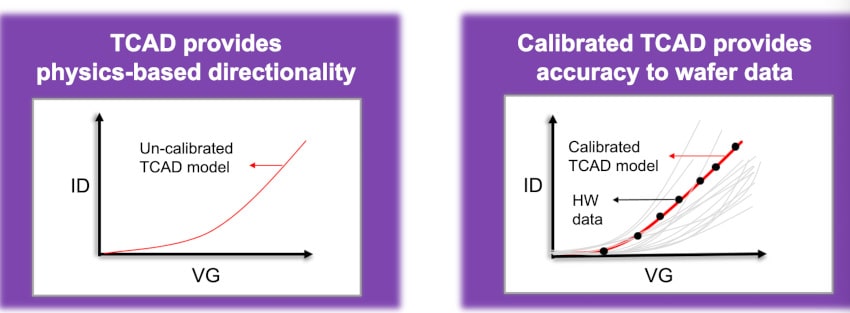Actual users of circuit simulators told their design and simulation stories at DAC during a luncheon sponsored by Synopsys on June 8th. I always prefer to hear from a design engineer versus a marketing person about what tool they use for circuit simulation, and how it helps them analyze their design goals. This year there were engineers… Read More
 Pioneering Engineer Dr. Tsu-Jae King Liu to Receive Semiconductor Industry's Top HonorIn a landmark recognition of trailblazing innovation and…Read More
Pioneering Engineer Dr. Tsu-Jae King Liu to Receive Semiconductor Industry's Top HonorIn a landmark recognition of trailblazing innovation and…Read More PDF Solutions Charts a Course for the Future at Its User Conference and Analyst DayEvery major supplier has its user event. This…Read More
PDF Solutions Charts a Course for the Future at Its User Conference and Analyst DayEvery major supplier has its user event. This…Read More Synopsys and NVIDIA Forge AI Powered Future for Chip Design and Multiphysics SimulationIn a landmark announcement at NVIDIA's GTC Washington,…Read More
Synopsys and NVIDIA Forge AI Powered Future for Chip Design and Multiphysics SimulationIn a landmark announcement at NVIDIA's GTC Washington,…Read More IEDM 2025 and the 100th Anniversary of the FETThe International Electron Devices Meeting (IEDM) is the…Read More
IEDM 2025 and the 100th Anniversary of the FETThe International Electron Devices Meeting (IEDM) is the…Read MoreXilinx Datacenter on a Chip
I talked recently about the Intel acquisition of Altera which seems to be all about using FPGA technology to build custom accelerators for the datacenter. Some algorithms, especially in search, vision, video and so on map much better onto a hardware fabric than being implemented in code on a regular microprocessor.
So if the heart… Read More
Why Automotive IP Portfolio is not just IP
Synopsys is launching a broad IP portfolio to support SoC development dedicated to emerging automotive complexes functions, like Driver Assistance (ADAS), Driver Information, Vehicle Network or Infotainment. I was never involved into IC design for Automotive, but I have designed ASIC for avionics (CFM56 motor control) or… Read More
Gary Smith Passed Away Last Friday
I expect most of you have already heard the sad news through other channels: Gary Smith died last Friday, July 3rd, from pneumonia in Flagstaff, Arizona.
I must have first met Gary back in Dataquest days when I was at VLSI Technology. Gartner then acquired Dataquest and eventually shut down the EDA practice and laid Gary off. He then… Read More
SEMICON West Preview
Founded in 1971 (2015: 45th year), SEMICON West 2015 is coming to the Moscone Center in San Francisco on from Tuesday, July 14[SUP]th[/SUP] to Thursday, July 16[SUP]th[/SUP]. SEMICON is the premier show for equipment and materials companies supporting the semiconductor, MEMS and solar industries.
The main ways to get value … Read More
Apple Watch – A Great New Design, Needs More
During 52[SUP]nd[/SUP] DAC, there was a special session where a brand new Apple watch was opened and each of its components was shown with a brief description about it. I found this tear down session a great innovative idea coming from DAC organizers; actually two buzzing products, AppleWatch and DJI’s Phantom Drone were opened… Read More
Opportunity NoCs, But Not Without Software
It is easy to think that semiconductor IP is all about structures on the silicon. After all, there is “semiconductor” in the phrase “semiconductor IP”. But increasingly the heart is actually software. Sonics’ SGN product is a network-on-chip but to build it you need to use the software that actually… Read More
Intel 10nm delay confirmed by Tick Tock arrhythmia leak-"The Missing Tick"
Our 6/15 report of more 10nm Intel delays confirmed by leaked info…
The delay appears to have interrupted Intel’s Tick Tock cadence…
Kabylake replaces Skylake – Cannonlake pushed out over horizon?
The news we broke is now confirmed…
On 6/15 we put out a report that broke the news of further delays… Read More
Trends in Automotive Electronics at #52DAC
The coolest and most expensive car at DAC this year had to be the McLaren P1, priced at $1,150,00 and powered by a 903 hp gas/electric hybrid. Electronics are used in autos to provide safety features, infotainment, motor control and performance.
Also at DAC this year there was an Automotive Village with more cars and experts from … Read More
Cellphones on the Path of Extinction
Semiconductor based electronics has continuously improved lives of people through various kinds of technology upgrades in the gadgets for our daily use. Imagine the journey from a mechanical typewriter to a laptop computer connected through a laser printer, transition from black & white photography to exotic coloured… Read More






PDF Solutions Charts a Course for the Future at Its User Conference and Analyst Day